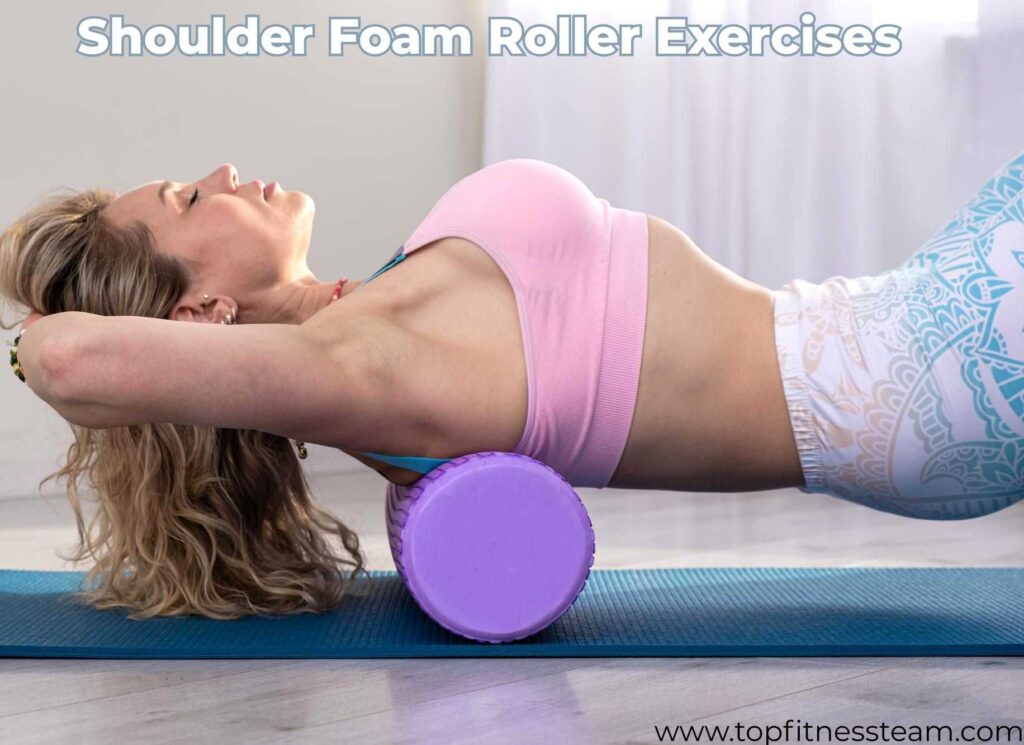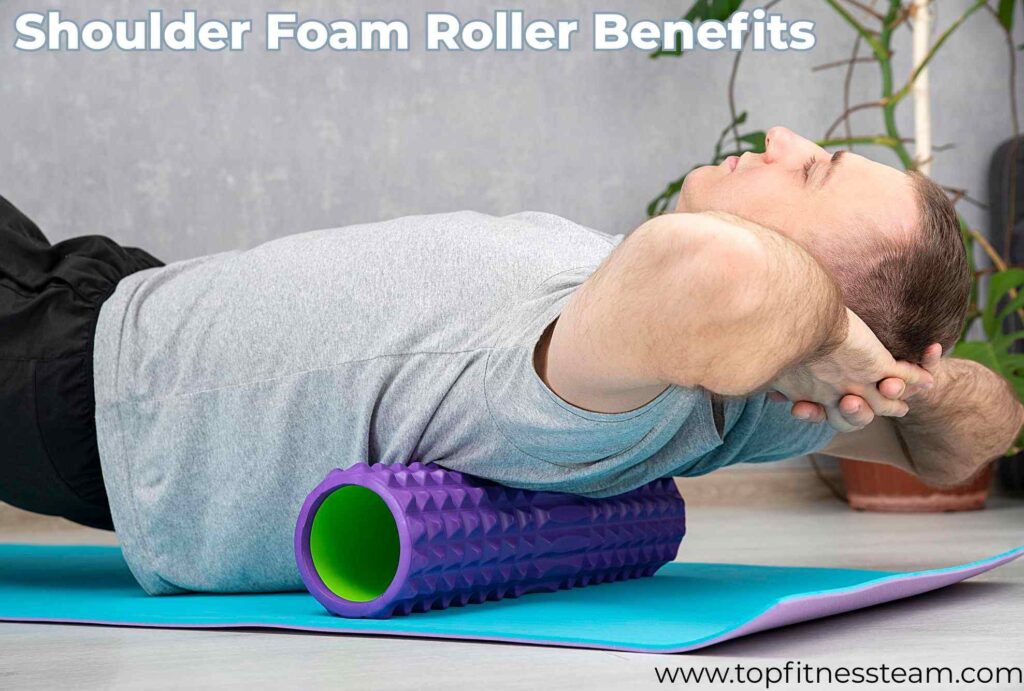Hello everyone, Top Fitness Team is here. This article will tell you about Shoulder Foam Roller Exercises & Benefits.
Introduction
The wonders of foam rolling are not limited to our legs and back. Targeting the shoulder blades can bring significant relief, specifically if you are familiar with shoulder pain.
When bound by muscle knots or tightness, the range of motion in our shoulders can lead to pain or even injuries. Foam roller shoulder exercises can be a game-changer.
Shoulder Foam Roller Exercises
Shoulder foam roller exercises are pivotal for clearing tension and improving mobility in the upper body. These exercises promote better poses and reduce pain by targeting muscle knots and releasing tightness around the shoulder blades.
They are essential for athletes and desk workers, providing the shoulder remains agile and discomfort-free. Incorporating them into a regular fitness routine can pave the way for healthier, more flexible shoulders.
Benefits of Using Foam Rolling the Shoulders
Why should you consider shoulders foam rolling? Besides the noticeable pain relief, it improves blood circulation and reduces rash in the muscle tissue.
By breaking down sticking in the connective tissue, foam rolling increases flexibility improves the range of motion, and prevents shoulder-related injuries.
How to Perform Foam Rolling the Shoulders
Shoulder foam rolling is a therapeutic technique that aids muscle relaxation and increases mobility. To provide energy and avoid injury, follow these guidelines on performing the exercise correctly here, and I also offer Video for your help. lets Delve
- Choose the right foam roller.
- Position the roller under the shoulder blades.
- Keep your spine straight during rolling.
- Apply gentle pressure on knots.
- Move slowly for effective release.
- Repeat regularly for best results.
How to Perform Roller Foam Your Neck
Foam rolling your neck requires utmost care due to its delicate structure. To begin, place the foam roller at the base of your skull, avoiding direct contact with the spine.
Gently roll from the ground to the upper back, using your hands for support and control. Always use light pressure and stop immediately if you experience sharp pain or discomfort.
And I will provide a video for your help. Let us watch Now.
Which Gyms Are Offer
Shoulder foam rolling has gained immense popularity for its effectiveness in alleviating muscle tension and improving shoulder mobility.
Thus, many gyms have incorporated this beneficial tool into their offerings. Here are some gyms that offer shoulder foam rollers. Let’s delve
- Gold’s Gym
- Planet Fitness
- 24 Hour Fitness
- LA Fitness
- Equinox
- Crunch Fitness
- Lifetime Fitness
- Anytime Fitness
(Note: The said gyms are based on general knowledge as of the last update in 2022. Availability of foam rollers may vary by location, and other local gyms or specialized fitness centers might also offer them.)
How to Choose the Right Foam Roller For Your Shoulders
With so many foam rollers in the market, personal preference plays a crucial role. Whether you lean towards a smooth, ridged, long, short, firm, or soft roller, remember that each has unique benefits.
Beginners might prefer more peaceful rollers, while those seeking deep tissue massage might opt for firmer ones. Remember to watch for any specific foam roller exercise advice for the shoulders.
Tips & Precautions
Always maintain a straight spine. Provide your neck remains relaxed, avoiding added strain. Differentiating between a good pain (a sensation of releasing tension) and a nasty, sharp pain is vital.
If you have recently had an injury, consult with a professional before foam rolling.
Supplemental Therapies to Consider
Pairing foam rolling with other exercises can yield optimal results. Consider integrating chest workouts. This Top 10 Best Cable Chest Workouts list can be an excellent place to start.
Top 10 Best Band Shoulder Exercises offer a complete guide for shoulder-specific exercises.
Testimonials & Case Studies
Numerous individuals have found solace in foam rolling their shoulders, noting improved stance and reduced pain.
Many claim the process helps improve blood flow, reducing the number of muscle knots and relieving pain.
Pros & Cons
Pros
- Improves shoulder flexibility quickly
- Alleviates muscle tension effectively
- Improves blood circulation locally
- Prevents potential shoulder injuries
- Aids post-workout muscle recovery
Cons
- It can worsen specific injuries
- Incorrect use causes harm
- Initial discomfort or pain
- Not a total therapy solution
- Quality rollers can be pricey
Summary
Prioritizing shoulder health is essential. Including foam rolling in your routine can bring about significant improvements, not just in terms of pain relief but also in overall shoulder functionality.
My Final Thoughts
In an age where many of us are hunched over desks or straining our shoulders, a simple act like foam rolling can bring relief.
It is a small investment of time that yields significant benefits. Dive into the world of foam rolling and let your shoulders thank you!
FAQs
Q: Can you use a foam roller on your shoulder?
Ans: A foam roller on the shoulder can help release tension and improve flexibility.
Q: What is the best foam roller for shoulders?
Ans: The best foam roller for shoulders is one with a medium density, offering a balance between ease and deep tissue massage.
Q: How do you use a foam roller for a shoulder injury?
Ans: For a shoulder wound, gently using the foam roller is essential, focusing on areas without acute pain, and always confer a physiotherapist before starting.
Q: Should you foam roll your rotator cuff?
Ans: Yes, foam rolling the rotator cuff can aid in releasing tension. Still, it is essential to use gentle pressure and bypass moving directly on inflamed or injured areas.
Q: What muscles should you not foam roll?
Ans: Avoid foam rolling the lower back directly and light areas like the front of the neck, groin, and armpits.
Thanks.


